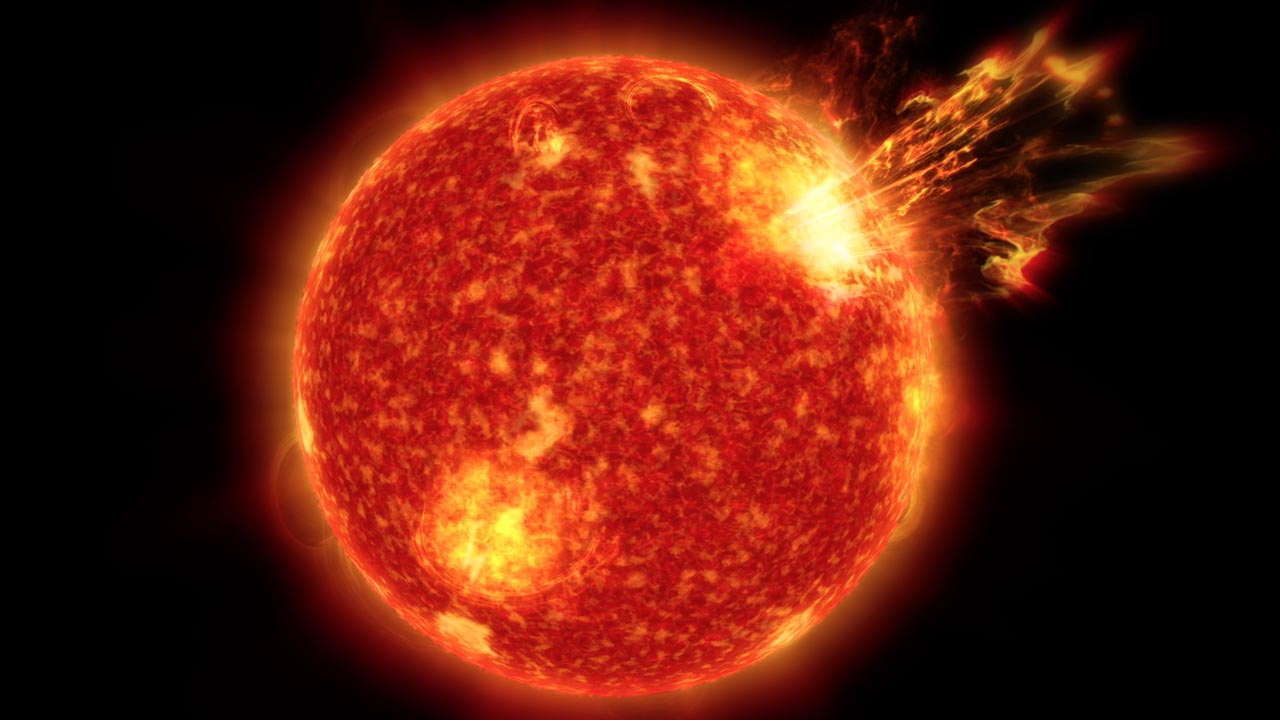Instagram: Solar Storms May Have Been Key to Life on Earth
Our sun's adolescence was stormy—and new evidence shows that these tempests may have been just the key to seeding life as we know it.
Some 4 billion years ago, the sun shone with only about three-quarters the brightness we see today, but its surface roiled with giant eruptions spewing enormous amounts of solar material and radiation out into space. These powerful solar explosions may have provided the crucial energy needed to warm Earth, despite the sun's faintness. The eruptions also may have furnished the energy needed to turn simple molecules into the complex molecules such as RNA and DNA that were necessary for life. The research was published in Nature Geoscience on May 23, 2016, by a team of scientists from NASA.
Understanding what conditions were necessary for life on our planet helps us both trace the origins of life on Earth and guide the search for life on other planets. Until now, however, fully mapping Earth's evolution has been hindered by the simple fact that the young sun wasn't luminous enough to warm Earth.
"Back then, Earth received only about 70 percent of the energy from the sun than it does today," said Vladimir Airapetian, lead author of the paper and a solar scientist at NASA's Goddard Space Flight Center in Greenbelt, Maryland. "That means Earth should have been an icy ball. Instead, geological evidence says it was a warm globe with liquid water. We call this the Faint Young Sun Paradox. Our new research shows that solar storms could have been central to warming Earth."
Energy from our young sun – 4 billion years ago -- aided in creating molecules in Earth's atmosphere that allowed it to warm up enough to incubate life. This is a text-only version of the video.
Music credit: Ocean Travel by Laurent Dury from the KillerTracks Catalog.
Complete transcript available.
Watch this video on the NASA Goddard Instagram.
For More Information
Credits
Please give credit for this item to:
NASA's Goddard Space Flight Center
-
Scientist
- Vladimir Airapetian (Sigma Space Corp.)
-
Animators
- Walt Feimer (HTSI)
- Krystofer Kim (USRA)
- Brian Monroe (USRA)
-
Producers
- Genna Duberstein (USRA)
- Joy Ng (USRA)
-
Technical support
- Aaron E. Lepsch (ADNET Systems, Inc.)
Release date
This page was originally published on Friday, June 10, 2016.
This page was last updated on Wednesday, May 3, 2023 at 1:48 PM EDT.
